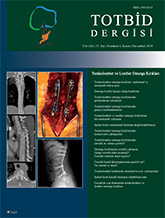
In vertebral fractures, the primary goal of the surgeon is to stabilize the spinal column and correct the deformity. For this purpose, many surgical approaches and techniques have been defined, and new technology is added to them every day with the developing technology. The oldest and classicized debate is whether treatment should be done surgically or conservatively. Surgical tendency has been increasing in recent years, with changes in the classification of spine fractures and developing percutaneous techniques. One of the main issues discussed in vertebral fractures is where the approach to the vertebral should take place. The choice of surgical method for spinal fractures is influenced by factors such as the severity of the injury, age and general condition of the patient. However, the most effective determinant in this regard is the experience of the surgeon. The experience mentioned here is very much about philosophy of approach to fracture than of surgical skill. Knowing where to focus on osseous and ligamentous structures, and what imaging methods to insist on depends on this experience. What type of surgery should we perform on a patient with a spinal fracture? We may need to evaluate many variables to be able to answer the question. Many factors will influence the decision-making process, including the presence of neurological findings, the patient`s age, sociocultural level and activity level, the presence of another injured spinal segment, the morphological type of the fracture, the presence of polytrauma, obesity, and the presence of osteoporosis. It is important to acknowledge that there is more than just a single `right choice` and that the experience of the surgeon is the most decisive factor.